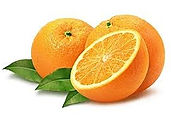
Здоровое Питание - профилактика болезней.
Healthy Eating - Disease Prevention
Еда как лекарство.
Food as Medicine. Healthy Food to Eat.

No matter who is the father of your illness, the mother of it is unhealthy food.(Chinese saying)
Кто бы ни был отцом твоей болезни, мать ее - скверная пища ( китайская пословица)
Eye Protection
RU
Glaucoma prevention
An unusual way to prevent glaucoma, was suggested in a study by Dr. Kulkarni of the University of Louisville ( Kentucky, USA).
The method is very simple - eat fish and fish oil! The study showed that the addition of fish oil to the diet of rabbits ( often used for studying eye diseases), significantly reduced intraocular pressure, which typically increases with glaucoma. Intraocular pressure in rabbits under the influence of fish oil decreased by 56% and returned to previous levels when fish oil intake was stopped. The experiment was prompted by the fact that Eskimos, whose diets are rich in fish and fish oil, have a very low rate of glaucoma. Fatty fish is food for the eyes and provides glaucoma prevention - in the Doctor's opinion.
Cataract prevention
Cataract - clouding of the eye lens, may lead to loss of vision. Studies have found that a lack of fruits and vegetables in the diet, often leads to the development of cataracts. Consuming vegetables and fruits less than 1.5 times daily, increases the risk of cataracts by six times.
Also, researchers have found that with low levels of carotenoids in the blood, the likelihood of cataracts in old age is 7 times higher. In addition, a lack of vitamin C in the blood increases the risk of developing cataracts by 11 times! Further, fruits and vegetables, especially spinach, protect against the development of cataracts in the elderly. The cataract preventative capability of spinach, is believed to be related to its content of antioxidants, one of which is beta - Carotene. Lack of folic acid, present in green leafy vegetables, such as spinach, broccoli, and legumes, also leads to cataracts. Thus, a diet including fresh vegetables and fruits rich in beta - carotene and folic acid is key to cataract prevention.
Image with normal vision Image with cataract
It is believed that cataracts can be caused by oxidation processes in the lens under the influence of the sun. Therefore, the various antioxidants help prevent the development of cataracts. There is evidence that for all types of cataracts in the lens, there are very low levels of the antioxidant glutathione. It is believed that its deficiency can cause cataracts. Glutathione is found in many fruits and vegetables - asparagus, avocado, watermelon, oranges and grapefruit. It is also found in strawberries, peaches, white potatoes, zucchini, cauliflower,broccoli and tomatoes.
Only fresh and frozen vegetables and fruits should be eaten! Food preservation methods diminish benefits to only one eighth of their original levels.
Champions in content of the antioxidant glutathione - protection against cataracts

Blueberries have also been found to be very good for support and preservation of vision. Blueberries extract, in clinical studies, prevented vision loss.

Teas (black, green, red, but not herbal) - are rich in vitamins and antioxidants, and are therefore a great food for eyes and prevention of cataracts. Green tea is richer in catechins, followed by the red, and black teas. Thus, the green tea more useful. Tea drinkers are less prone to atherosclerosis ( blockage of blood vessels) and strokes.
Cataract healing with honey
Drops, based on May honey, can delay the development of early stage cataracts.
In a small bottle pour pure light May honey and add distilled water. Proportion 1:3 (honey/water). Stir and put 2-3 drops into each eye 3-5 times per day. If you experience discomfort or a burning sensation, reduce the concentration of honey to 1:4 or 1:5. After two weeks, gradually increase the concentration of honey to 1:3 or even1:2. Fresh drops should be prepared every 2-3 days and then kept in the fridge. The treatment should be continued up to three months.
Consult your doctor if conditions do not improve.
This treatment should obviosly be avoided by those allergic to honey !

. To improve Vision
If you have poor eyesight, drink every day for a month, 1 glass of juice, consisting of 100 grams of carrot juice, 100 grams of parsley and 50 grams of beet juice. By the end of the month your vision will be much better
Eye Exercises
Palming:
Close your eyes and place your palms over them without pressing on the eyeballs.
Relax and keep your palms over your eyes for 2-3 minutes.
This exercise helps to relieve eye strain and fatigue.
Focusing:
Sit comfortably and hold a pen or pencil in your hand.
Focus on the tip of the pen and slowly bring it closer to your nose without losing focus.
Then slowly move the pen back, keeping your eyes on the tip.
Repeat this exercise 10-15 times.
Circular Movements:
Look to the right and slowly move your gaze upward, then to the left and downward, describing a circle.
Repeat the movement clockwise and counterclockwise 10 times.
This exercise improves the flexibility of the eye muscles.
Blinking:
Blink rapidly for 20-30 seconds.
This exercise helps to moisten the eyes and improve blood circulation in the eyes.
This website is intended for informational purposes only and not as a guide for self-treatment. Always consult your physician.







